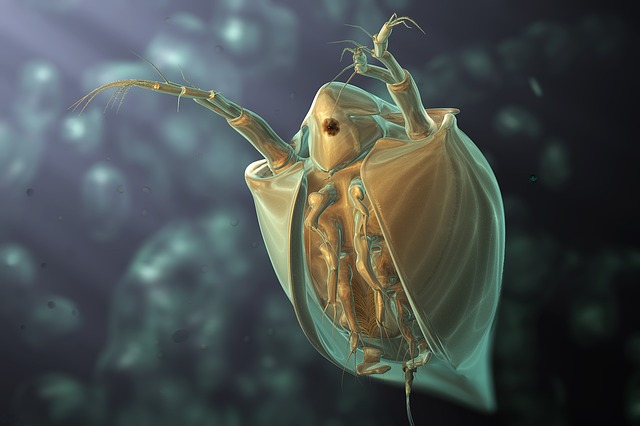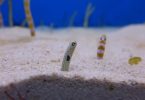Table of Contents
Want to learn how to get rid of water fleas in a fish tank?
These are some of the things you would not want roaming inside your fish tank, but it could be depending on the water conditions.
In most cases, fish tank owners let their fish take care of the problem, but this is not always possible.
This often depends on the type of organisms living inside the fish tank. If you don’t have the right fist, water fleas will continue to be a problem!
What are some reasons why water fleas come on in the first place?
Reasons include:
- Water temperature in the tank
- water quality
- Types of Tank Living Organisms
This includes where the water fleas are, how many are present, and how living organisms are reacting to their presence.
What are water fleas?
Freshwater environments are typically home to water fleas. Daphnia is the most well-known genus of water fleas.
Daphnia can be found in water bodies all over the world, from North America to Europe. Whenever the term “water fleas” is used, it is almost always referring to daphnia in the aquarium community.
The water flea is microscopic and only measures between.0001 and.0012 inches in length.
They primarily consist of:
- One head with one antenna
- The trunk and abdominal cavity are protected by a hard shell called the carapace.
To move their bodies through the water, they make use of antennae strokes.
Algae and other tiny bits of organic matter make up the bulk of the water flea’s diet. So, when it comes to your fish tank, are these little crooks friend or foe?
Water fleas: Are they harmful to my aquarium?
The idea of “having fleas” is unappealing. The first thing to keep in mind is that Daphnia are not true fleas.
Water “fleas” are small shrimp. They’re not shrimp, exactly, but they’re a type of crustacean. Consequently, they are strictly aquatic in nature.
Concerning the health of your aquarium, let’s evaluate the potential dangers. Here’s what we want to make sure water fleas aren’t:
Directly contaminating or degrading the water quality by pestering or harming your aquarium fish and other animals.
You may also notice a difference in your tank’s aesthetics as a result of this.
Though they aren’t the worst thing one could see, I can see why you wouldn’t want to.
Perhaps you tolerate some but prefer to get rid of the rest when the number gets too high. Consequently, we’ll analyze below how to eliminate water fleas in fish tank.
It’s good news, though, that Daphnia won’t do any real damage to your aquarium. They do not harm marine life or the water supply. Lots of fish species will appreciate having a ready food source.
Daphnia is a popular option that many homeowners either purchase or grow.
The same holds true for the plethora of other crustacean and small invertebrate species that might drop by your fish tank. As soon as you spot something out of the ordinary, you should do your best to figure out what it is before deciding whether or not to get rid of it.
How to get rid of water fleas in fish tank
Each of these options is straightforward and easy to put into action without incurring excessive costs or delays.
1. Let your fish do the heavy lifting
This is the simplest and fastest approach, so give it a try first. Please be patient with them before trying anything else.
If you really want to boost the fish’s morale, you should stop feeding it. This could aid them in recognizing the local food supply that is literally floating in front of their eyes. As a result, the influx of fresh organic matter that daphnia consume will be slowed.
Daphnia are a popular food source for smaller fish. If your current rooster isn’t biting, try introducing some new, smaller fish.
The water flea is a delicacy for many fish. However, if the inhabitants of your tank show no signs of involvement, you should try other, more proactive strategies.
2. Change the water in your tank.
Most people who keep fish in tanks will raise this as a worry at some point. To sum up, changing the water is the first step in learning how to get rid of water fleas in fish tanks.
They are primarily consuming suspended organic matter particles for food. They’re piling on the pounds and starting families. Changing the tank’s water will eliminate the fleas’ source of nutrition. Fleas can be washed away, and the old food-contaminated water can be swapped out for fresh, particle-free water.
However, remember that water changes can be stressful and even fatal for your fish. Do not replace the entire water supply at once, and always adhere to the guidelines for safe water changes.
It is preferable to aim for a higher percentage of water replacement than 50%. The purpose of this method is to rid your fish tank of water fleas.
There will be some manual labor involved, and a top-tier water changer will be required. However, once the water flea is eliminated, this will prove to be a worthwhile endeavor.
Keep a close eye on the pH level and take your time when changing the water. It’s important that the water change doesn’t disrupt the ecosystem in the fish tank.
3. Try an Eco-Friendly Aquarium Cleaner
The use of an organic fish tank cleaner is one of the best options for dealing with this issue.
There is a decrease in organic waste thanks to the use of biological tank cleaners. Particles of waste are caused by overeating or overcrowding, though even thriving aquariums will generate some waste.
These items are made to help you clean better. However, you can use them to your advantage in your fight against water fleas by reducing the availability of their food source. Look for something that is aquarium-safe, and use it as directed.
The advantages are:
Efficiently and safely eliminates water fleas in a short amount of time
Using a cleaner of this type can be a quick and painless way to fix the issue. Simply adhere to the guidelines, and you’ll discover that everything works out for you!
4. Employ the blanched-zucchini trick.
The trick with the blanched zucchini is the most well-known home remedy for water fleas.
Get started by blanching a zucchini. Then you can just snip off a part and drop it into your water tank. Water fleas will supposedly be drawn to zucchini and attach themselves to it. As soon as you notice it, discard the zucchini.
The entire process shouldn’t take more than a few hours, though you may find it more convenient to leave the zucchini in the tank overnight before removing it.
Those who are truly interested in learning how to eradicate water fleas in a fish tank should begin here.
5. Empty the Filtration System
Have you taken the time to check your fish tank’s filter?
A lot of owners won’t think about the filtration system and it’s going to make the water quality in your tank worse. In short, water fleas become trapped in the filtration system, causing them to spread further.
This is an important responsibility for anyone who is thinking about getting rid of water fleas safely and effectively in your fish tank.
6. Install a ScreenTop
Most fish tank owners prefer their tanks to be topless. Easy to maintain but it invites mosquitoes.
So, instaling a screen top or a lid that covers your fish tank will go a long way in preventing water fleas. Finding a right dimension will be the challenge.
You can try the local reptile pet store or try to DIY. The screen top can be made of netting material so it is quite easy to find.
7. Flea Repellent Plants
The ultimate natural remedy to get rid of fleas is to seek help from specific plants to help repel these biting insects. There are a range of different plants that repel fleas.
Plants that keep fleas away:
- Penny Royal
- Chrysanthemum
- Lavender
- Spearmint
Final Thoughts on How to Get Rid of Water Fleas in Fish Tank
We wish you luck if you’ve been fighting water fleas and hope this guide was helpful. Keep in mind that water fleas won’t harm your fish or the water’s quality.
They may appear to have the upper hand, but their presence only poses a minor issue that you can easily resolve.
Each one is going to work and this will make it easier to keep the fish tank clean and free of water fleas.







